Bob Mayer's Blog, page 49
January 6, 2020
How to Write and How to be a Writer
The two are somewhat different. There are lots of writing books out there. It seems after a certain number of years writing, each author tries to capture the essence of their craft and art. I first did this in the early 90s, which, yikes, is a while ago. My first draft of the The Novel Writers Toolkit was 11 pages long. And this was after I had published four books traditionally. As the years went by, I added and revised.

The Novel Writers Toolkit was picked up and published by Writers Digest in 2001. It earned out in less than six months. This version was quite a bit longer, needless to say. Once I got the rights back, I continued to revise and update as I learned more. The current version is current. And I just put it in Kindle Unlimited today.
The reason it’s called a Toolkit is I don’t believe you can ever tell a writer: “You can’t do that!” Because I guarantee I can find “That” in a bestselling book somewhere. There are many craft tools. We can only use them wrong.
But that’s how to write the book. What really surprised me in publishing was the lack of books on how to be an author. Every job I’ve held, I end up writing an SOP for it. Standing Operating Procedure. When I first reported to my Special Forces A-Team they had taught me in the Q-Course at Bragg to ask for the team’s SOP. So I arrived at 10th Special Forces, got assigned to a team, and asked for the team SOP. They didn’t have one. They said they knew everything they needed to know.
That didn’t help me much. So we wrote one. Turns out we didn’t know as much as we thought we knew.
Once I became published, I learned many hard lessons, usually by doing things the wrong way. I looked around for guidance and the attitude of agents and editors seemed to be: learn on the job.
Which is a terrible idea. But I understand where it comes from. They know 99% of the writers they work with won’t be around in 10 years so it’s kind of a waste of time to educate each one. But I always wondered: which comes first? The writer failing or the lack of education on the business side helping the writer fail?
So I started writing down what I learned. I had various names for it over the years. Even back when I used to comb bind my workbooks for workshops and conferences (that gives you an idea how long ago it was, well before Print On Demand), I quickly broke my Toolkit into a craft book and a business section.

The business section evolved into Write It Forward: From Writer to Successful Author. Not only did I write about lessons learned, I incorporated things we had done in Special Forces into it.
I have a unique perspective, not just because of my Special Forces background, but also because I have a wide publishing experience: 42 books traditionally published; 9 with an Amazon Publishing imprint, which is very hot right now; and the rest indie published. I’ve hit all the bestseller lists and have made my living as a writer for three decades.
I hope burgeoning writers take advantage of my knowledge as I continue to take advantage of the expertise and knowledge of others. I feel like every year I learn so much more about my craft and business. It’s always evolving.
But here’s something I truly believe after three decades: there’s never been a better time to be a writer!
January 4, 2020
What Is An Area Study
I’ve just added this section from the Green Beret Preparation and Survival Guide to Wattpad, and here is the excerpt below. An Area Study is the step many people overlook when they begin to prepare but it gives focus to all efforts.
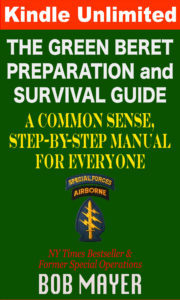
WHAT
IS AN AREA STUDY?
An Area Study is simply examining your environment
with the perspective of evaluating assets and threats so you can properly
prepare. An Area Study will allow you to tighten down your preparation and
focus on things in order of priority. It’s not just the environment but also
includes yourself and your team.
In Special Forces, prior to deploying to an Area of
Operations, we conducted an Area Study of that location. You must conduct an
Area Study of your Area of Operations (AO). This means studying your home, your
work, school, and any other locales where you and people on your A-Team spend a
significant amount of time. When taking a trip, you should conduct a travel area
study, examining the route you will take, your destination, and your route
back.
There are so many cases where a thoughtful Area Study
followed up by the appropriate preparations would have saved lives. Preparation
is so much better than reacting. Which is what we’re doing now.
Area Studies can have non-emergency uses, such as if
you’re considering moving to a new place. An Area Study can provide valuable
decision making data.
Think about it. You live in a tsunami zone. Have you
actually driven your evacuation route? How long does it take? Have you figured
out the quickest escape route on foot, when an accident caused by terrified
people blocks the road or everyone in your neighborhood flees at the same time
on the same route creating a traffic jam? You work on the 40th floor of a
skyscraper. Do you ever look around and ask yourself: how do I get out of here
if the normal means of egress are blocked? While schools run active shooter
drills, what about the work place?
You’ve begun your Area Study and didn’t even realize
it by doing Task Two. Some of the core questions are already answered: How
close are you to the nearest military base? Nearest police station? Firehouse?
Hospital? Do you know where the closest emergency room is? How long will it
take to get there? How quickly can an ambulance respond to your location? When my
wife and I lived on a winding road that was difficult and confusing to travel,
during one medical emergency my wife had to be driven to the nearest largest
road to meet an ambulance as it came toward us, saving considerable time and
perhaps her life.
You want to examine your environment for a lot of
things. What can harm you? What can help you? What can hide you? What are your
enabling factors? What are your disabling factors? What is the terrain and how
can it help you or hamper you in movement? What are the roads, trails, rail,
etc. What effect does your environment have on you? What effect will you have
on it?
You don’t have to answer these questions right now,
but you will soon.
In essence, an Area Study requires you to invest some
time and energy on research and to look at your surroundings from a different
perspective. It can actually be a fun experience and allow you to see the world
around you with a different perspective. Get your A-Team involved because we
all look at things a little bit differently.
When my A-Team traveled, the engineers would be
looking at things with a unique perspective. When they saw a bridge, they were
mentally calculating how to blow it up. When they saw a stream, they were
thinking how to provide a water supply to villagers and irrigation for fields.
My weapons men would look at terrain for fields of fire for direct and indirect
fire weapons. And cover and concealment for us. As a survivor, you have to look
at your environment in terms of what you can use and what can be a threat, what
can be scavenged and much more, which requires you to assume a different
mindset for a while.
We live in a variety of natural environments. There
are also a wide range of human developments from urban to remote rural. Thus
one size doesn’t fit all.
Doing an Area Study is critical so you can tailor your
preparation (and the information in this book) for your specific situation.
Some threats are going to be of much more importance for you to prepare for
than others. For instance, if you live in Oklahoma, the threat of hurricane is
nonexistent (so far), but tornados and earthquakes are likely.
The first step is to start with the most important factor: you and those in your A-Team.
More to come.
January 3, 2020
Accurately Predicting How A War Will Go Will Make People Call You Crazy
First interesting piece of trivia: William Tecumseh Sherman was the first president of the Louisiana State Seminary of Learning and Military Academy, which eventually became LSU.
In 1860, with war clouds on the horizon, he wrote a letter to a fellow professor where he predicated what a Civil War would be like.
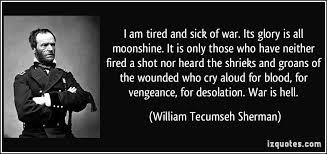
Not long into the actual war, after he resigned his post, went north and served the Union, he was sent home for being ‘crazy’ because he was thought to be too pessimistic.
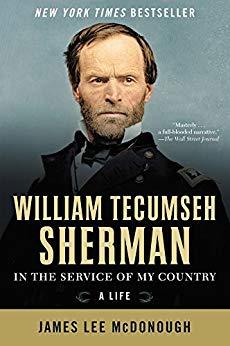
I recently read an interesting biography of him, that I recommend.
Here’s the letter:
You people of the South don’t know what you are doing. This country will be drenched in blood, and God only knows how it will end. It is all folly, madness, a crime against civilization! You people speak so lightly of war; you don’t know what you’re talking about. War is a terrible thing! You mistake, too, the people of the North. They are a peaceable people but an earnest people, and they will fight, too. They are not going to let this country be destroyed without a mighty effort to save it … Besides, where are your men and appliances of war to contend against them? The North can make a steam engine, locomotive, or railway car; hardly a yard of cloth or pair of shoes can you make. You are rushing into war with one of the most powerful, ingeniously mechanical, and determined people on Earth — right at your doors. You are bound to fail. Only in your spirit and determination are you prepared for war. In all else you are totally unprepared, with a bad cause to start with. At first you will make headway, but as your limited resources begin to fail, shut out from the markets of Europe as you will be, your cause will begin to wane. If your people will but stop and think, they must see in the end that you will surely fail.
Duty, Honor, Country, a novel of West Point and the Civil War.
January 1, 2020
Welcome to 2020! Time To Get Ready For The Future—Free Books!
There are several books free for you to start the New Year with!
Free today, 1 January 2020 and tomorrow, 2 January, is The Green Beret Preparation and Survival Guide.
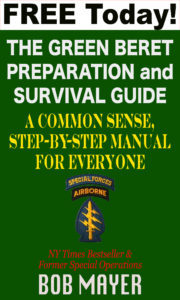
I really believe this book is critical for everyone and that’s the reason it’s free to start the year. It’s guides you in preparing, even if you’ve starting from scratch. If you get it and check it, please feel free to leave a review and let us know what you think!
Free today only, 1 January: Lawyers, Guns and Money
Free to 3 January: Eternity Base (Green Berets)
And Nine-Eleven (Time Patrol) is discounted to .99.

All these books are listed HERE
We wish everyone the best for 2020!
Bob & Cool Gus, and even Scout
December 31, 2019
How To Prepare for and deal with Wildfires
As Australia is learning, wildfires are extremely dangerous. We had one here in the Smokies a couple of years ago that killed a bunch of people. Driving through not long after, you can hardly see the damage to the forest; but you can see the houses that burned. It moved so fast the trees were barely burnt.
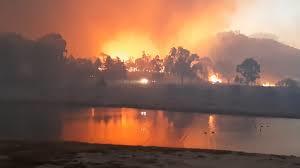
First,
know when the danger is high. If there’s been drought, that heightens
the risk. High winds help push it. Watch the special on the Paradise
fires in CA and you’ll get an idea how fast it moves.
All fires start small. All fires go out. What matters is what happens in between.
The
wind throws embers one mile or more ahead of the flames. These embers
start new fires. A fast wild fire has an intense wall of heat in front
of it. Even if the flames haven’t arrived, it will combust the most
flammable material.
As
the main fire approaches your house, strong winds blow embers
everywhere possible – under decks, against wood fences, into woodpiles,
and through open doors and windows.
In some places the air is so smoky that you can’t see more than 10 feet.
Close to where the fire is burning most intensely, the air is far too hot to breathe.
The rising smoke and ash create winds on the ground which cause the fires to burn even more intensely.
Fires
like this occur every year. Wild fires don’t just happen in the summer;
in many areas fires can happen year round. When it is dry and windy be
watchful and prepare to take action to protect your family and property.
To prepare your home if you live in an area prone to wildfires, here is a list of things to do:
Keep your roof and gutters free of leaves.
Store
firewood at least 30 feet away from structures. The nice pile against
the side of your house is called fuel for a wildfire.
Your outdoor furniture should be made of noncombustible materials.
Clear
the area around your house of combustible material such as leaves,
bark, pine needles and underbrush. Especially trim grass and brush
around your propane tank. Optimally you want a hundred foot barrier of
no trees, shrubs or bushes around your house.
When building walls, barriers, gates, landscaping, etc use noncombustible materials.
When
evacuating a wildfire, you should leave as soon as you receive notice.
Considering there is a chance your house might not be there for you to
come back to, besides your GnG bag, also take that fireproof container
with all your key documents in it. And your pets. Beyond that, forget
about it.
While evacuating, make sure you have enough gas. This goes back to always keeping your tank at least half full.
Leave any gates open for firefighters and others.
Drive with headlights on. If it’s smoky, close all windows, and recirculate air inside the vehicle.
If
you get trapped, park in an area that is clear of vegetation (parking
lot, gravel area, dirt), close all windows and vents, cover yourself
with a blanket or coat and lie on the floor. Car tires may burst from
heat.
In an
extreme situation, you have to consider whether you can stay in your
house only if: your only escape route is blocked; smoke is so thick you
can’t travel; you don’t have time to evacuate; or emergency personnel
tell you to.
You
cannot stay in your house if: you have wood siding or shingles; you’re
located in a narrow canyon or on a steep slope; you have a lot of
vegetation close around the house. Find a neighbor with a better house.
If you do stay in a house, do the following: use a sprinkler or the sprinkler system to wet the yard. Wet the roof with a hose. Turn off all propane and gas. Close all windows and doors. Move fabric covered furniture away from large windows or sliding doors. Turn off everything that circulates air through the house. Close all interior doors.
Excerpted from The Green Beret Preparation and Survival Guide
December 30, 2019
How To Stay Warm, Without Being Able to Make a Fire

I remember the first time I deployed in winter with 10th Special Forces, the winter warfare Special Forces group. I had little idea about what it was like to operate at altitude (above 10,000 feet) and in the winter cold. My team sergeant had just come from Panama so he didn’t either. We built a snow cave together and showed it off to the amusement of the more experienced team members. We explained we had two entrances so the wind could blow the cold out. Eventually I became a fan of a snow trench. Thermarest pad on the bottom— and note the name— therma. You don’t want to be touching the cold ground. So don’t just put stuff on top of you, put something between you and the ground. I kept the trench just deep enough to put a poncho across the top. I would glaze the walls with a small candle. One night I was awakened for my guard shift and the poncho was in my face, almost suffocating me with over a foot of snow having fallen.
Part of stay dry is if you have to move, strip down so you don’t sweat. I’d give my team time warnings for when we’d move out on our skis with all our gear. We’d take off our outer shell at about a minute. And as time got close get down to polyprop undershirts. We were damn cold, but not for long once we moved out. Skiiing with gear, an akhio, uphill isn’t fun.
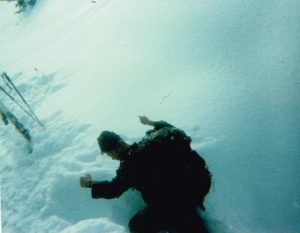
Also, we didn’t take our weapons into our snow trenches because that would warm them up and make them sweat. Then they’d freeze. And you wouldn’t be able to defend yourself against the Abominable Snowman.
Also, canteens stayed next to the body or– they freeze. The next meal went in the thigh cargo pocket to thaw it out.
Fun stuff. The Green Beret Preparation and Survival Guide. Get prepared for the New Year!

December 29, 2019
The Report and the Sec of State
I recently noticed the Secretary of State weighing in on his review of a movie. Which is odd, to say the least.

I watched The Report and yes, it is fiction. Thus, why is he weighing in on it? Doesn’t he have more important things to do?
It’s also odd since his boss, the President HAS called our “intelligence warriors” a slew of negative names and smeared them and that is not fiction. That’s reality. Yet not a word from Pompeo. The president has also smeared patriots working for Pompeo and not a single tweet or word of defense of people he is supposed to be leading and is responsible for.
It is definitely not leadership.
I can only assume that after I graduated West Point, the leadership standards were in the toilet, although Pompeo graduated 1st in his class, which is also amazing.
This isn’t political. This is practical. The CIA conducted a campaign of torture that was if not illegal (yes, they danced around the legality of it) but most definitely immoral and violated the norms for which this country is supposed to stand. The torture has not kept us safe. Every experienced interrogator could have told them, and many did, that torture doesn’t produce credible results.
Furthermore, as a writer of fiction, I find it odd that someone in his position would see fit to comment on it and act is it was some insult.
Once more– not political. I am tired of people assuming they know where your stance is on everything if you speak out against a specific topic. Torture was wrong; I don’t care where you stand politically. If we can’t admit our mistakes we’re going to keep repeating them: aka Vietnam and then Afghanistan. But that’s another topic.
December 27, 2019
Key Documents You Need To Scan, Upload and Keep in One Place
When I was updating The Green Beret Preparation and Survival Guide I read a lot of action reports and interviewed people who’d survived disasters, whether they were natural or man-made. From wildfires to earthquakes to hurricanes, to toxic chemical release requiring evacuation– the gamut.
One common refrain, besides the gear they wished they’d had on hand and had ready for evacuation in the Grab-n-Go bag, was the documents that they needed and/or lost.
If you had a house fire, would you be able to reconstruct key documents? Would you have a copy of your home owners insurance handy? Medical information?
From those interviews and reports, I compiled a list of key documents we all need to scan, then upload to the cloud and keep on a thumb drive, somewhere not our home. Also, keep these documents in a fireproof portable lock box you can grab if you need to evacuate.

This is from The Green Beret Preparation and Survival Guide
All the checklists from the book are free to download in mobi, epub or pdf format on my web site HERE.
If you have any suggestions about what else should be on this list, please let me know.
December 25, 2019
Merry Xmas from Cool Gus
 fresh green grass with bright blue sky and sunburst background
fresh green grass with bright blue sky and sunburst background
December 23, 2019
The Donner Party– more than just cannibalism
Most have heard of the Donner Party and we immediately think of the most notorious aspect: the cannibalism. But when I began researching the event for my Gift of Failure book, what struck me was the lack of leadership and the murders that occurred before the cannibalism. After all, it’s a desperate measure of last resort. What caused people to go to that last resort?
What I learned was that the preceding Cascade Events dates back to well before the party even left for the west. The Mexican War, which many don’t remember, played a role. A book published by a man who didn’t know what he was writing about, also played a key role.
So here is it (PS: the short nonfiction story is FREE on all ebook platforms)
The Donner Party: A True Horror Story of Murder, Mayhem and Cannibalism from Bob Mayer



